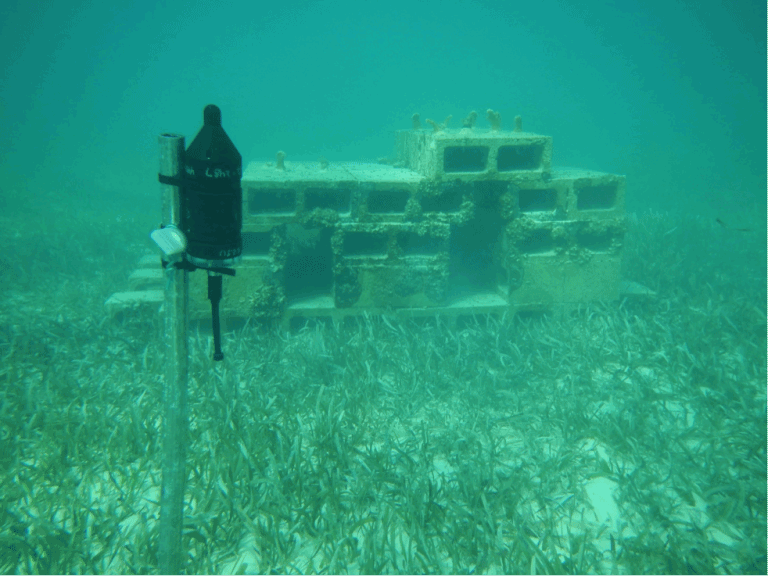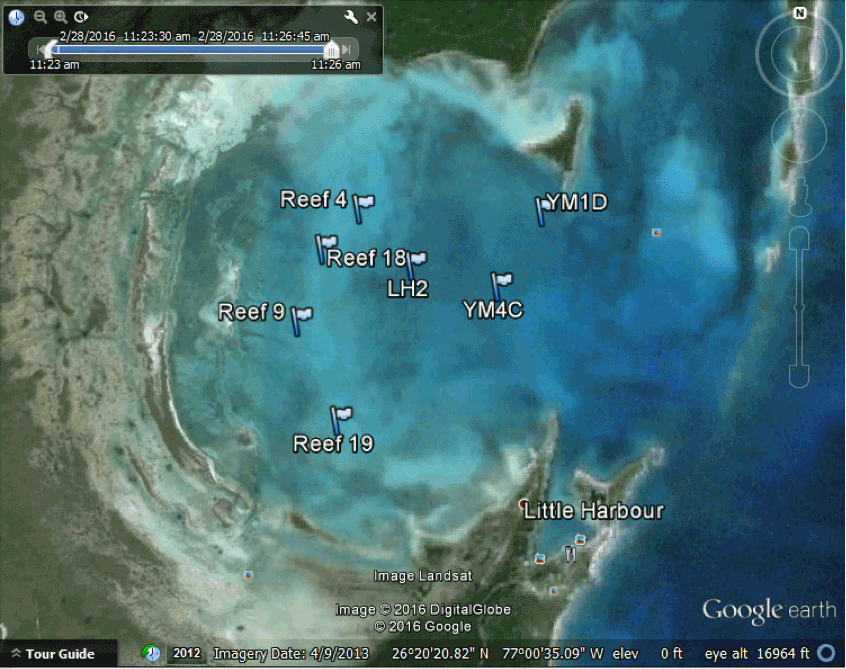Soundscapes, Habitat Characteristics, and Fish Assemblages of Caribbean Artificial Reefs
Project Overview
This research project looks to investigate how soundscape data, habitat characteristics, and fish surveys could be collectively used to describe artificial reefs. Artificial reefs serve as essential sources of habitat and refuge for many species of reef fish. Studies looking at Caribbean coral reefs have called for long-term acoustic sampling of these ecosystems to sharpen biological assessments using acoustic data and to address how individual reefs can change on a temporal scale. By passively recording an artificial reef over the span of five months, we can paint a picture of a dynamic and acoustically active habitat. The goal of this research is to apply different metrics (i.e. Acoustic Entropy, H or Acoustic Complexity Index, ACI) to these soundscape data to make inferences on reef fish abundance and diversity. Through the juxtaposition of different acoustic metrics with data retrieved from fish surveys and habitat evaluations, we can discover which metrics better describe the populations at these reefs.

Research Questions
- How do the soundscapes of artificial reefs differ from each other based on habitat characteristics?
- What soniferous reef fish species frequent these sites and what can we learn about them from these acoustic data?
- Which acoustic indices better explain the fish diversity seen at these artificial reefs?
Study System/Methods
Bight of Old Robinson, Greater Abaco Island, Bahamas

- Deployed 7 hydrophones on cinder block artificial reefs
- Sounds at reefs set to record for 2 minutes every 20 minutes from March – July 2016.
- Habitat characterisitcs and fish species/abundances recorded for each site.
- Will use MATLAB to analyze and evaluate acoustic data.